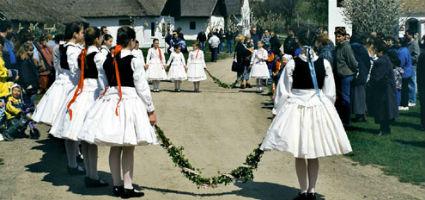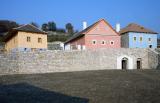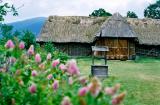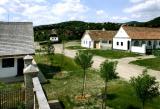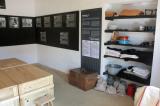
Keresztély, Lőrinc, János, Anna or Teréz? Who are they? Where are they from? What happened to them and their family after WWII? Our permanent exhibitio is to remember the history of the house in Hidas where a Swabian family used to live in the past.
The exhibition is to remember the substitution of Swabian families in the village of Hidas after WWII, with all the pain and difficulties of the events.
Entering the rooms, the visitors find situation cards which direct them to take on the role of someone who once used to live there. Walking on, the visitors may identify more and more with their character. They can find out about what kind of food their character used to have, how it was dressed, and finally, all the fear, chaos of the times when she or he had to leave his or her home.
So, who was Jusztina, Aladár, Lajos? Learn more about them!

